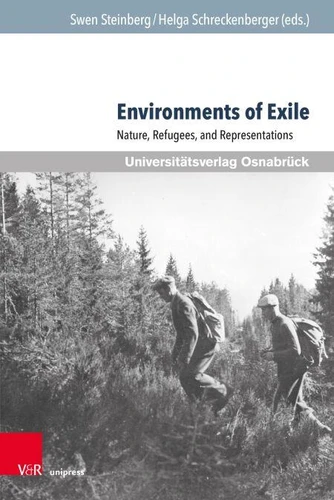Environments of Exile. Nature, Refugees, and Representations
Par : , , , ,Formats :
Disponible dans votre compte client Decitre ou Furet du Nord dès validation de votre commande. Le format PDF est :
- Compatible avec une lecture sur My Vivlio (smartphone, tablette, ordinateur)
- Compatible avec une lecture sur liseuses Vivlio
- Pour les liseuses autres que Vivlio, vous devez utiliser le logiciel Adobe Digital Edition. Non compatible avec la lecture sur les liseuses Kindle, Remarkable et Sony
 , qui est-ce ?
, qui est-ce ?Notre partenaire de plateforme de lecture numérique où vous retrouverez l'ensemble de vos ebooks gratuitement
Pour en savoir plus sur nos ebooks, consultez notre aide en ligne ici
- Nombre de pages200
- FormatPDF
- ISBN978-3-8470-1694-6
- EAN9783847016946
- Date de parution09/12/2024
- Protection num.pas de protection
- Taille8 Mo
- Infos supplémentairespdf
- ÉditeurV&R Unipress
Résumé
Forced migration always takes place within specific cultural, social, political, and spatial environments. This volume focuses on the interaction between those forced to migrate and their environments in the contexts of escape and exile from Nazi-occupied Europe. Forced emigration from Nazi Germany was a global phenomenon that took refugees to regions they often knew very little about. Not only did they have to adapt to foreign cultures, but also to unfamiliar natural environments that often exposed them to severe temperature conditions, droughts, rainy seasons, and diseases.
While some refugees prepared for the natural conditions of their exile destination, others acquired environmental knowledge at their host countries or were able to adapt prior knowledge to the new environment. Consequently, specific knowledge about the environment had a large influence on the forced migration experience.
While some refugees prepared for the natural conditions of their exile destination, others acquired environmental knowledge at their host countries or were able to adapt prior knowledge to the new environment. Consequently, specific knowledge about the environment had a large influence on the forced migration experience.
Forced migration always takes place within specific cultural, social, political, and spatial environments. This volume focuses on the interaction between those forced to migrate and their environments in the contexts of escape and exile from Nazi-occupied Europe. Forced emigration from Nazi Germany was a global phenomenon that took refugees to regions they often knew very little about. Not only did they have to adapt to foreign cultures, but also to unfamiliar natural environments that often exposed them to severe temperature conditions, droughts, rainy seasons, and diseases.
While some refugees prepared for the natural conditions of their exile destination, others acquired environmental knowledge at their host countries or were able to adapt prior knowledge to the new environment. Consequently, specific knowledge about the environment had a large influence on the forced migration experience.
While some refugees prepared for the natural conditions of their exile destination, others acquired environmental knowledge at their host countries or were able to adapt prior knowledge to the new environment. Consequently, specific knowledge about the environment had a large influence on the forced migration experience.





